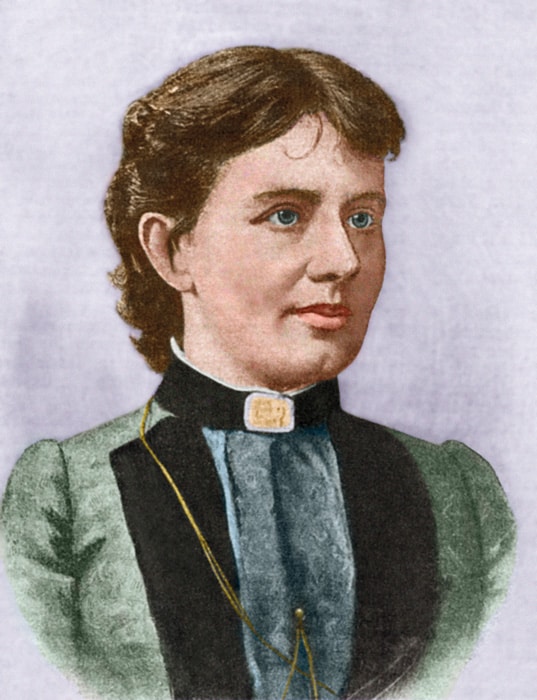Margaret Harris reviews Significant Figures by Ian Stewart

Sofia Vasilyevna Kovalevskaia (sometimes spelled Kovalevskaya) is surely the only person in history who became a mathematician because of a botched redecoration project. As Ian Stewart recounts in his book Significant Figures: the Lives and Work of Great Mathematicians, Kovalevskaia’s parents ran out of wallpaper while renovating their country estate outside St Petersburg, Russia, so they had their daughter’s bedroom papered with pages from an old mathematics textbook instead. Their improvisation had long-term effects: young Sofia was fascinated by the strange formulae on her ersatz wallpaper, and she spent hours staring at them, trying to discern their meaning. Soon she had them memorized.
Although it took Kovalevskaia a few more years to understand her wallpaper in full, this early exposure to mathematics ignited a passion that drove her across Europe in pursuit of the educational opportunities denied to women in 19th-century Russia. During her short but eventful life (1850–1891), she wrote plays, studied the dynamics of Saturn’s rings and made notable contributions to the mathematics of rigid rotating bodies. She also became, by some estimations, the first woman in Europe to gain a PhD in mathematics, and eventually landed a (paid and tenured) job as a lecturer at Stockholm University in Sweden – another first.
Kovalevskaia is one of 25 mathematicians profiled in Stewart’s book, which begins with Archimedes and runs nearly to the present day, with the final chapter devoted to Bill Thurston, a topologist who died in 2012. In addition to anecdotes, Stewart, a mathematician at the University of Warwick, UK, makes a serious stab at explaining the mathematics for which his profilees are remembered and their significance to the wider field. For example, around the book’s halfway point, he describes how the 19th-century German mathematician Bernhard Riemann used an idea from mathematical physics to obtain certain results in mathematics. Riemann’s results were correct, but the underlying idea, known as the Dirichlet principle, had not been rigorously proven, which troubled some in the mathematical camp.
What happened next nicely elucidates the difference between mathematical physicists and mathematicians, and Stewart’s description of it deftly sidesteps the question of whose approach is “correct”. Eventually, he writes, other mathematicians managed to prove the Dirichlet principle, but “In the interim, the physicists made progress that wouldn’t have happened if they’d heeded the objections of the mathematicians, and the mathematicians’ efforts to justify Riemann’s intuition led to a host of major results and concepts that wouldn’t have been discovered if they’d sided with the physicists. Everybody won.”
The book’s chronological structure means that later chapters necessarily involve more advanced mathematical ideas, and the going sometimes becomes a bit steep for non-mathematician readers. Nevertheless, readers who have a bit of background in the field (or are willing to put in some extra effort) will be rewarded with a better feel for how the subject developed, as well as how some of history’s greatest mathematicians thought. Stewart’s choice of “greats” is also notably (and deliberately) inclusive, at least by the low standards of the “great figures” genre. Kovalevskaia is one of three women profiled. Four non-European mathematicians also appear among the 25, including one from the 20th century, the self-taught Indian genius Srinivasa Ramanujan.
Yet despite these welcome efforts at diversity and the high quality of the writing, Significant Figures nevertheless comes across as rather tired in its concept and structure. Without a coherent thread running through the profiles, the book struggles to be more than the sum of its parts. Worse, Stewart’s brief attempt at pulling the disparate threads together – in the epilogue, he argues that “great” mathematicians will readily give up everything, including family, material success and outside interests, for their work – is actually contradicted by his own book. Several of his picks, including Kovalevskaia, were as passionate about politics as they were about mathematics. Many devoted significant chunks of their lives to practical projects such as mine engineering (Henri Poincaré) or swamp drainage (Joseph Fourier). As for family life, although a few were indeed childless and/or unmarried, no less a mathematician than Leonhard Euler apparently felt “he had done some of his best work while holding a baby and surrounded by children playing”.
The “mandatory sacrifice” narrative peddled by Stewart (and, alas, by many others of lesser gifts) is not only false, but is also pernicious, because it tends to exclude brilliant people whose personal priorities or socioeconomic circumstances don’t fit into it. In one of the book’s last sentences, Stewart writes admiringly of those “great” mathematicians who “lecture for years for no salary, just to get a foot in the door”. If he is seriously offering this as career advice to young mathematicians today, I hope some friendly colleague convinces him to buck his ideas up before an irate mob of poorly paid adjuncts and teaching assistants begins sending him unpleasant letters. How many talented minds have been shut out by this kind of thinking in the past? How many are we still losing today? One thing is clear: unless such attitudes change, all of mathematics will be poorer for it, and writers a century hence will struggle to compile a more diverse collection of “greats” than Stewart has in 2017.
- Ian Stewart Significant Figures: Lives and Works of Trailblazing Mathematicians 2017 Profile Books 320pp £20hb
- Enjoy the rest of the December 2017 issue of Physics World in our digital magazine or via the Physics World app for any iOS or Android smartphone or tablet. Membership of the Institute of Physics required



